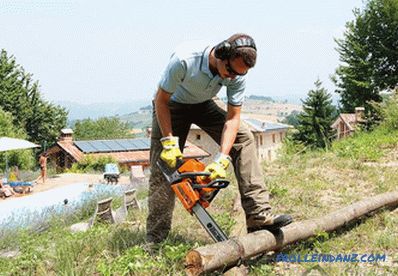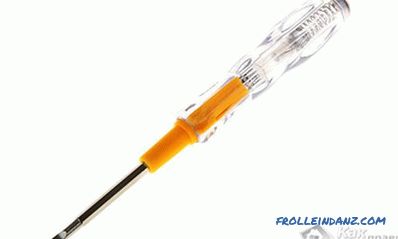Voltage stabilizer - a device absolutely necessary in every home. In production, it is also needed, but here we will talk specifically about household stabilizers, designed to protect household appliances and equipment from power surges and amperage. Typically, the line voltage is 220 or 380 V at a frequency of 50 Hz. But due to various factors - connection of high power consumers, peak loads in the evening or morning hours, accidents on power lines, the current can deviate from the specified voltage parameters by 25 - 40 in both directions.
Too low, as too high a voltage in the network is equally dangerous and undesirable for household appliances. Sudden jumps are doubly dangerous. Refrigerators, TVs, household pumps and boilers, computers can simply stop working. Input circuits may burn out, complex configuration electronics can cause other damage, which are rather expensive to repair.
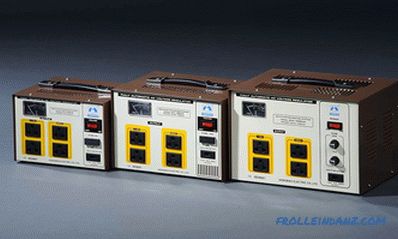
How does the voltage regulator
work? In order to determine which voltage regulator for the house is better to choose, it is necessary to know the basic principles of their operation, what stabilizers are and what parameters are important , and what you can not pay attention.
In essence - the stabilizer is an adjustable transformer with feedback. The alternating current from the line enters the primary winding and excites approximately the same current in the secondary winding, to which the consumers are connected. If the number of turns on the primary coil is changed, then the current in the secondary, in which the number of working turns remains the same, changes accordingly. The change in the ratio of the number of turns and the work of adjustable transformers is built.
Inductive coupling is very reliable and does not provide for direct contact of the windings - only by means of a metal core. Such transformers allow you to instantly change the parameters of the output current, you only need to adjust the control of the current collector device depending on the voltage in the supply network so that when the current drops in the highway in the secondary winding it increases, and when the voltage is exceeded it decreases.
A controlled transformer is the basis of all household stabilizers. The differences in them relate only to control schemes.
Types of voltage regulators
Two types of stabilizers prevail on the market - electromechanical and electronic.
Electromechanical voltage stabilizers
In electromechanical stabilizers, the current in the coil is regulated by a contact slider that moves along the surface, changing the number of working turns. He who remembers a school course in physics can imagine a rheostat from experiments in class. Similarly, the electromechanical voltage regulator works, only the slider is moved not by hand, but by means of an electric motor.
Electromechanical stabilizers are very reliable and allow you to smoothly change the voltage in the secondary coil. But with their simplicity, they also have a number of drawbacks:
- , like most mechanical devices, have noticeable inertia - the delay when triggered is noticeable to the naked eye;
- carbon contacts wear out over time and require replacement;
- The noise at work is barely audible, but there is still.
Before choosing a voltage regulator of an electromechanical type, it is necessary to compare the response speed specified in the product certificate in units of V / s. The better this indicator is, the better is the stabilizer for sensitive instruments.
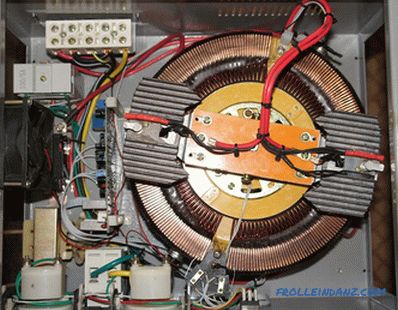
Electronic voltage regulators
Electronic stabilizers work somewhat differently. Feedback and switching are performed using thyristor, seven-horn or relay circuits, which change the number of windings connected to the network. Such stabilizers work absolutely silently, do not heat and have a very high speed of operation. But even here it was not without flaws - electronic stabilizers regulate the output voltage in steps. Although the drops are not too big, they can make a discord in the work of electronics or motors.
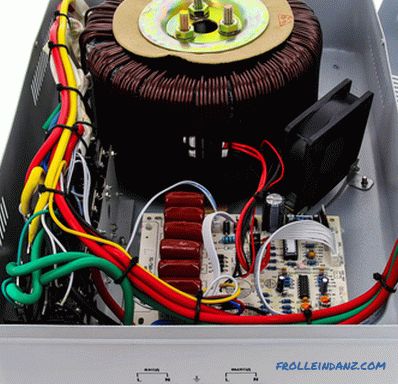
Ferromagnetic voltage regulators
Ferromagnetic stabilizers are devices that are practically not produced for domestic purposes, although you can still find early models that were very popular decades ago. Their work is based on changing the position of the ferromagnetic core relative to the coils. The system is very reliable, but cumbersome and noisy. The main disadvantages are work only under load and possible distortion of sinusoidal characteristics. For modern electronics and home appliances, they are unsuitable, but for powerful electric motors, hand tools and welding machines, their use is quite acceptable.
How to choose a voltage regulator according to the parameters
There are only a few really important parameters that characterize the efficiency of the stabilizer and the convenience of its use. These are:
- number of phases;
- power;
- adjustment range;
- response speed;
- overload protection ;
- connection method.
Which voltage regulator to choose for a private house can be solved only by properly outlining the range of tasks that it will perform, having considered the main characteristics in the complex.
Network or trunk stabilizer
According to the connection method, stabilizers are divided into trunk and network ones. The first ones are installed at the entrance of the power grid to the house and regulate the voltage applied to all consumers without exception - lighting, heating, alarm systems, and household appliances. As a rule, a modern home is an energy-saturated system with a high level of current consumption. Therefore, the power of the main stabilizers starts from 3 kW.
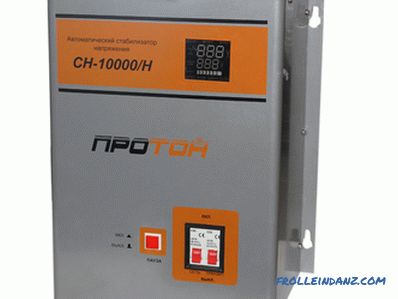
Network regulators are designed to protect one, less often two devices of the same type. They are included in the normal outlet and are an intermediate link between the trunk and the consumer. The power of the network stabilizers is relatively small, but there may be several of them in the house.
These are relatively inexpensive devices that allow you to protect complex and expensive equipment in the event that there is no trunk stabilizer, or the loads on it are very large. Network stabilizers are installed both in residential buildings and in offices, hospitals, points of contact, where many high-precision electronic equipment sensitive to voltage drops operate.
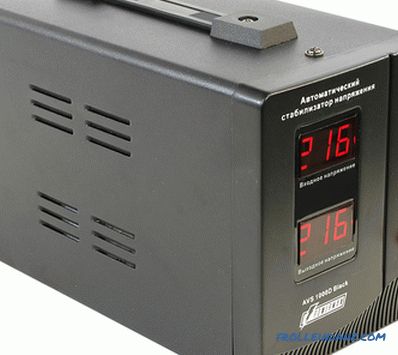
Number of phases of the stabilizer
One of the main determining parameters when deciding which voltage stabilizer is best for your home. A stabilizer with a recommended 220 V connection is required for a single-phase network. controlling voltage throughout the house.
It should be known that the majority of small and medium power domestic stabilizers are three synchronized single-phase in a common package. For high power, three transformers are usually used, assembled on the same core. They are more reliable and easier to adjust.
Power
To understand how to choose a voltage regulator for a private house, you need to know exactly how much electricity is consumed in the house theoretically and practically. The first digit is determined very simply - the powers of all consumers, from the bulb to the well pump and the welding machine in the garage, are arithmetically added. This figure shows how much power is needed with all the devices turned on at the same time.
But this indicator is not the upper limit - many tools and household appliances are equipped with electric motors, which, when started, consume much more current than during operation even at maximum load. This so-called reactive power leads to the fact that the total consumption increases significantly.
The next step is to multiply the power of each device with an electric motor taken in kVA (indicated in the passport) by 2 and add to the existing digit. Then increase the result by another 25% in case of unforeseen circumstances. After so difficult at first glance, calculations, you get the real power stabilizer, which should be installed in the house.
Power consumption (W.) of popular industrial and construction equipment:
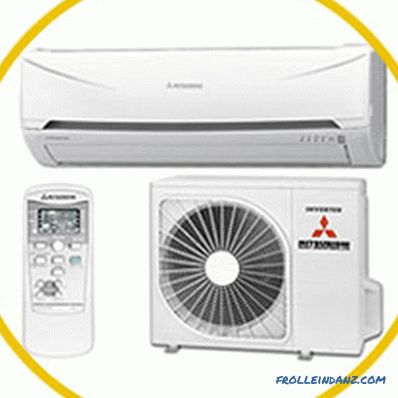
Air conditioning.
1000 - 3000 watts.
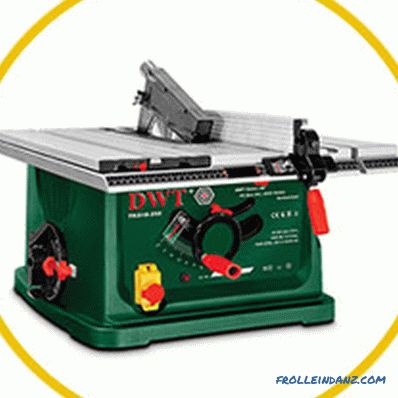
Circular machine.
1800 - 2100 watts.
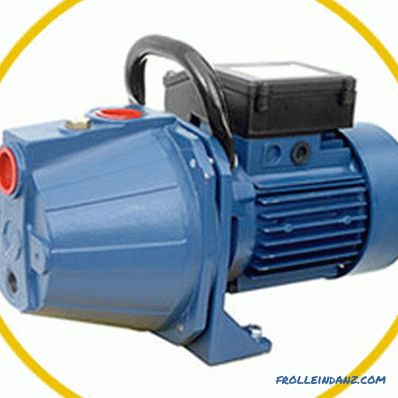
High pressure pump.
2000 to 2900 watts.
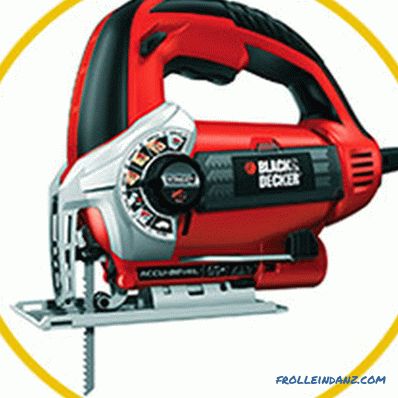
Jigsaw.
250-700 watts.
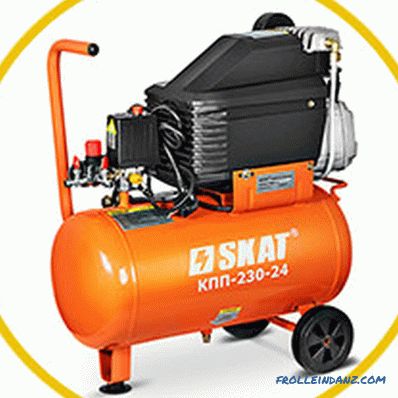
Compressor.
750 to 2800 watts.

Electric Motor.
550 - 3000 watts.
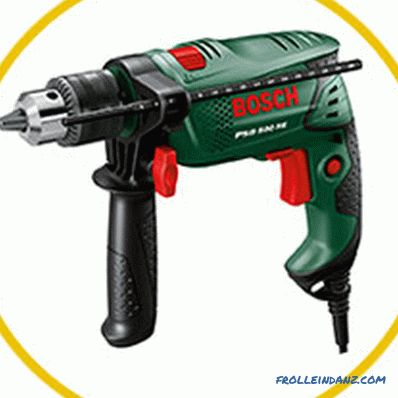
Drill.
400-800 watts.
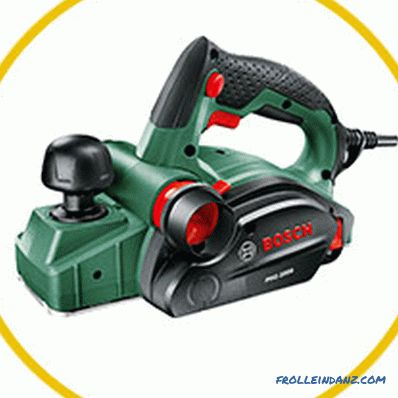
Electroplane.
400-1000 watts.
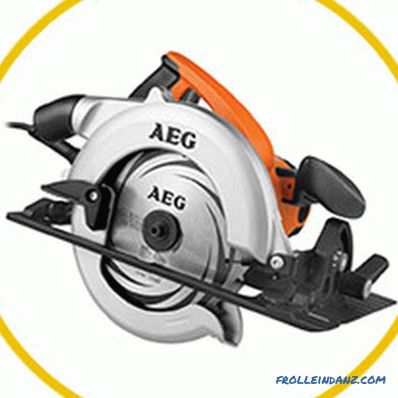
Circular saw.
750 - 1600 watts.
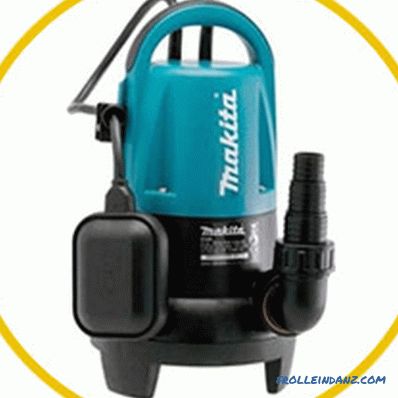
Water pump.
500 - 900 watts.
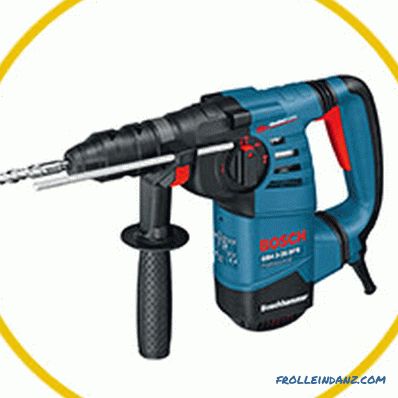
Puncher.
900 - 1400 watts.
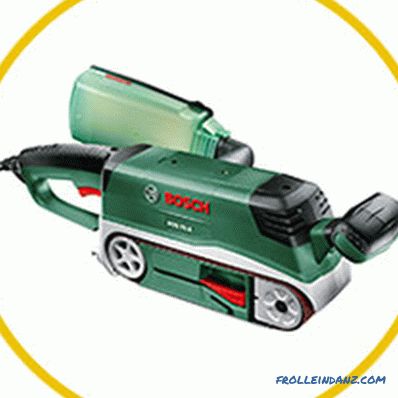
Grinder.
650 - 2200 watts.
Power consumption (W.) of household electrical appliances:

TV.
100 - 400 watts.
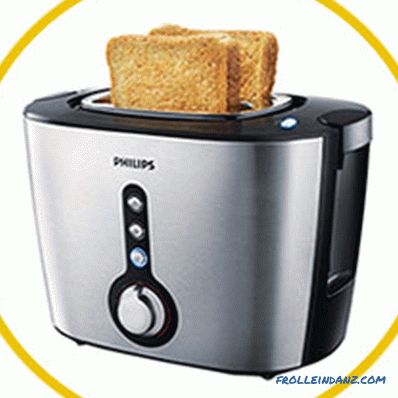
Toaster.
700 - 1500 watts.

Refrigerator.
150 - 600 watts.
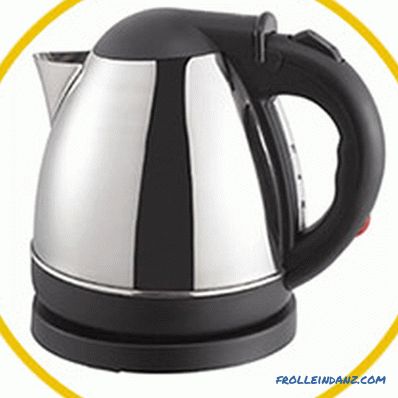
Electric kettle.
1000 - 2000 watts.
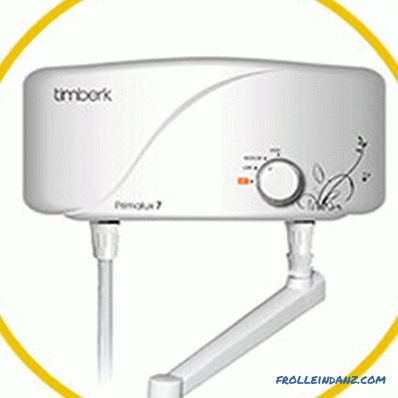
Instantaneous water heater.
5000 - 6000 watts.
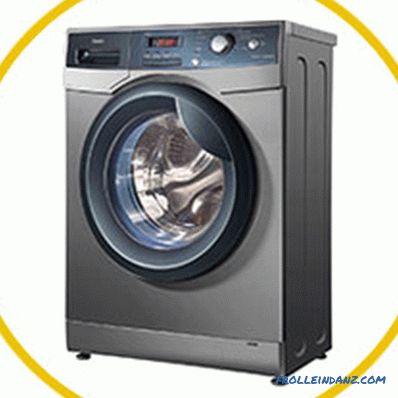
Washing machine.
1800 - 3000 watts.
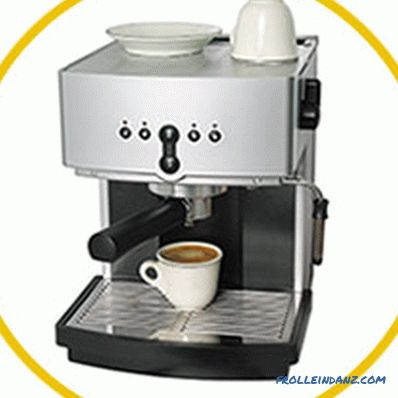
Coffee maker.
700 - 1500 watts.
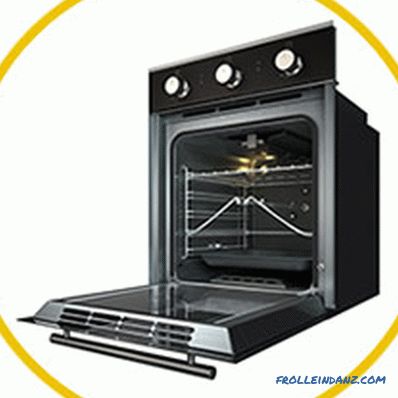
Oven.
1000 - 2000 watts.

Computer.
400 - 750 watts.
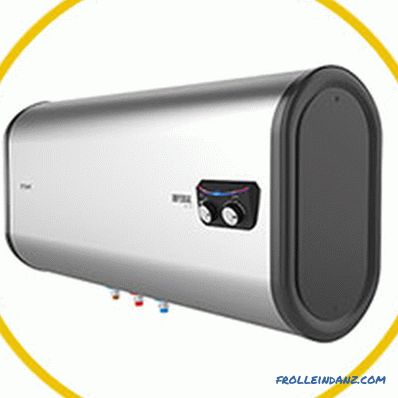
Storage water heater.
1200 - 1500 watts.
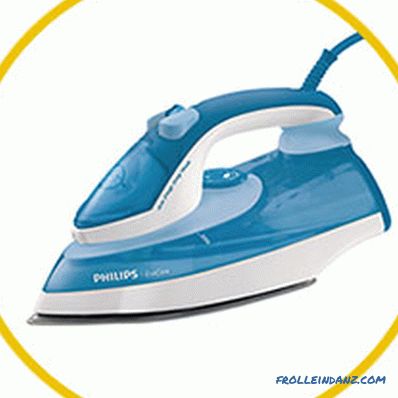
Iron.
500 - 2000 watts.
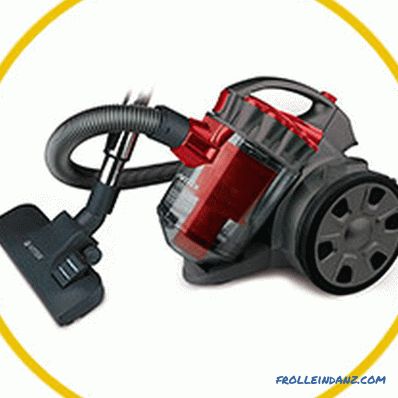
Vacuum cleaner.
400 - 2000 watts.
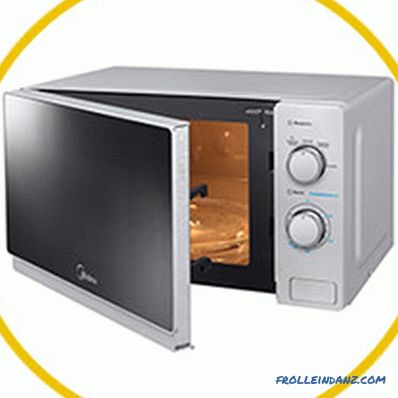
Microwave.
1000 - 2000 watts.
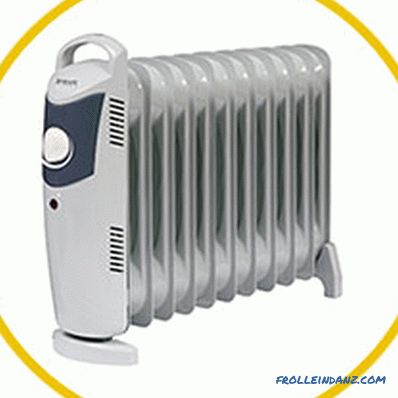
Heater.
1000 - 2400 watts.
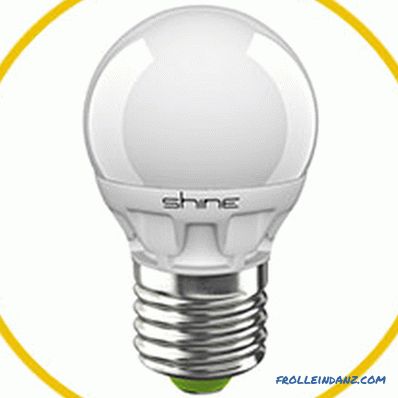
Electrolamp.
20-250 watts.
The average power of a three-phase stabilizer in a one-story house with a garage and a full set of household appliances barely exceeds 10 kW. It is not much and not too expensive. For a two-three-room apartment, 5 kW is enough, and for a two-storey mansion a stabilizer of 15 - 25 kW is needed.
But when choosing a power stabilizer, it is also necessary to pay attention to the range of voltage adjustments. It should be in the range of 150 - 250 V. Only in this part of the line of possible deviations does the stabilizer capacity correspond to the maximum stated in the passport. If the manufacturer has specified a wider range, for example 140 - 280 V - even better, your home will be protected more reliably. But at the same time the cost of the device increases slightly.
But price is not the main factor. It is not recommended to buy a stabilizer with a minimum range of adjustments, for example, 280 - 240 V, unless it is a network, if the house has a common trunk. Such devices are not too expensive, but they can even out the voltage only within narrow limits.
For special cases, when the deviations in the mains supply can be more than 120 V (in the lower side), complex and expensive stabilizers capable of operating in this range are used. Usually they are combined installations with electromechanical and electronic adjustment, operating in parallel. But such a technique is rarely required, so the average buyer is practically not interested in it.
By the power, each manufacturer's line-up has single-phase stabilizers up to 10 kVA and three-phase 5 to 30 kVA. Choose them, focusing on the above method of calculation, can anyone, not necessarily a professional electrician. It is not worth buying stabilizers with a capacity of 35-100 kVA for home or cottage. They are designed for installation in office and shopping centers, workshops and other objects with high current consumption. In addition, they are massive and expensive, and paying for excess capacity that will never be used is impractical.
Accuracy of output parameters
No stabilizer delivers exactly 220 V. There is always a variation in performance. Government standards allow deviations of up to 10% in both directions. As a rule, even very sensitive equipment, including inverters, computers and communication devices with such distortions of the parameters work quite reliably. Domestic consumers were originally designed for such deviations and they also pose no problems in operation.
According to the accuracy of the output voltage, the electromechanical stabilizers actually produce 220 ± 3% V, and the electronic ones - 220 ± 1% V, but their response time is an order of magnitude or even two lower. If the electronic controller is able to change the output voltage for hundredths of a second, then the electromechanical will spend from 0.5 to 1-2 seconds.
Stabilizer protection systems
Like transformers, protection systems are mandatory for all types of stabilizers. Their schematic diagram and tasks are approximately the same; they work when the supply current exceeds the limits of permissible loads and disconnects the consumer from the network. When the supply current returns to normal, the flow is restored automatically.
There is also an effective protection system for a stabilizer - it is a rather complex device with a mass of electronics sensitive to overloads in voltage and current. In the event of a short circuit in the network, a sharp jump in the current may occur, which can literally burn the circuits.
The auto-protection system will disconnect the primary winding and the adjustment system from the supply current until its normal parameters are restored. The inclusion of the stabilizer in the work is usually also done in automatic mode, but there are also models with manual switching on after an emergency stop.
Additional functions and options
Considering the issue of choosing a voltage regulator for an apartment or house, one should not lose sight of a number of additional functions that simplify operation, make it safer and expand the functionality of the installation.Often, of two stabilizers of the same phase, power and range of adjustments, it is worth choosing the one that has more functions, even if it costs a little more.
Voltmeter and ammeter
Household stabilizers are necessarily equipped with measuring devices - voltmeters, and ammeters - as an option. The devices show the output voltage after stabilization and the current strength of each phase. If you need to know the voltage in the mains, then in some stabilizers there is such an opportunity - just press a special button and the voltmeter switches to measuring the parameters of the input network. Most household stabilizers are equipped with analog (analog) voltmeters and ammeters of sufficiently high accuracy.
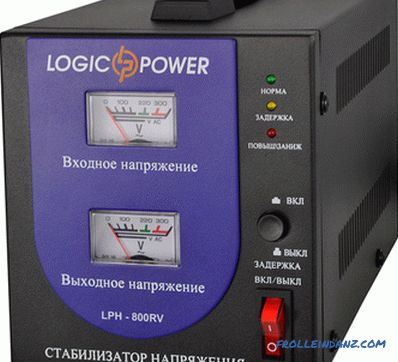
But recently, many manufacturers of stabilizers have switched to digital devices - this greatly improves the design and, of course, allows you to increase the cost of installation. Although the accuracy of the measurement does not have a big impact - when controlling the operation of a household stabilizer, the tenths and hundredths of units do not play a special role.

Many stabilizers are equipped with LED alarms that can alert you to the normal operation of the device, exit from the mode, critical overloads and other conditions of both the network and the device itself. Each manufacturer uses the number of LEDs and their colors, which seems to him the most convenient. Before using the stabilizer, it is necessary to familiarize yourself with the value of each light and its mode of operation - luminescence, blinking, the frequency of flashes.
The stabilizers work in automatic mode and the possibility of manual adjustment is not provided. But control devices perform an important enough function - it is always possible to determine the range of voltage deviation and current for each of the phases and disconnect the consumer who cannot work in these conditions. You can also visually monitor the total power of the current in the home network, using the data from control devices and the formula P = UI .
Ability to switch the delay in the appearance of voltage at the output
Another convenient option is the button for the delay of the output voltage. It is necessary that all the stabilizer circuits go out of service after start-up and supply the required current to the network. Usually this requires a stabilizer of the household level 5 - 7 seconds. But with a high level of power consumption in the home network, this time may not be enough, the button allows you to extend it to a few minutes and eliminate possible false starts.
Bypass mode
It is very convenient if it has a bypass function, that is, conditions for direct current flow, bypassing all the adjustment circuits and transformer equipment. This is very convenient when the supply voltage is much lower than the allowable range of operation or you need to connect a device that exceeds the critical level of the stabilizer in power. In this case, the switch allows the electric current to go straight to the consumer, and the stabilizer is in standby mode.
Forced Cooling Fan
Approximately up to a power of 10 kVA, stabilizers are cooled by convection currents that circulate freely through the ventilation openings of the housing. Higher capacity units are equipped with forced-action fans.
Features of installation and connection
As a rule, the connection of stabilizers is not difficult, especially the network and main single-phase. Network regulators are connected to a regular home network outlet. They have the same sockets (one, two or more, depending on the power), to which any device of the household level can be connected.
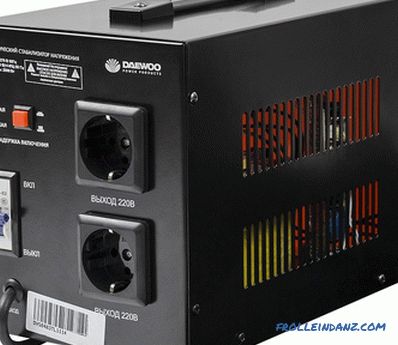
The trunk stabilizers are connected using a 5-pin terminal block. Two - for mains wiring, two - for entering the home network and one for grounding (mandatory). When installing the stabilizer near the point of entry of the cable line into the house, you can connect it yourself. But at the same time it is necessary to disconnect the main automatic switch (knife switch). Under voltage to make the connection is extremely dangerous and unacceptable according to all safety regulations.
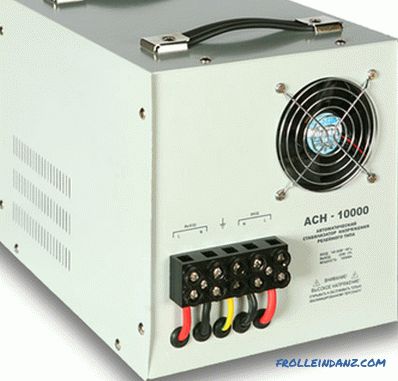
Put a stabilizer of any power after the meter. The three-phase stabilizer is equipped with a nine-pin block. Connect it to a professional electrician, using special tools. Installed stabilizers on the wall or on the floor, depending on the power and options.
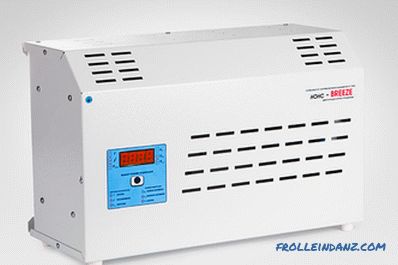
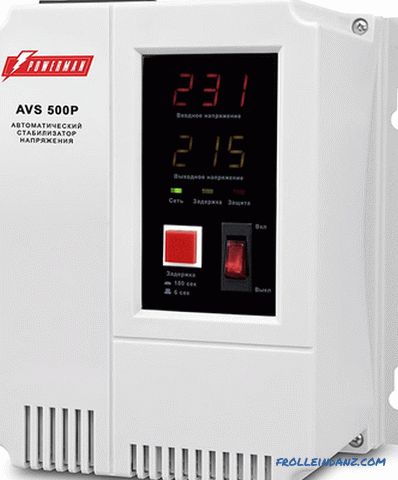
As a rule, their operation is allowed only at positive temperatures and normal humidity.At T ≥ +40 0 C, the thermal protection of the device may work, therefore, the stabilizer should be installed away from heating appliances in places closed from direct sunlight.

